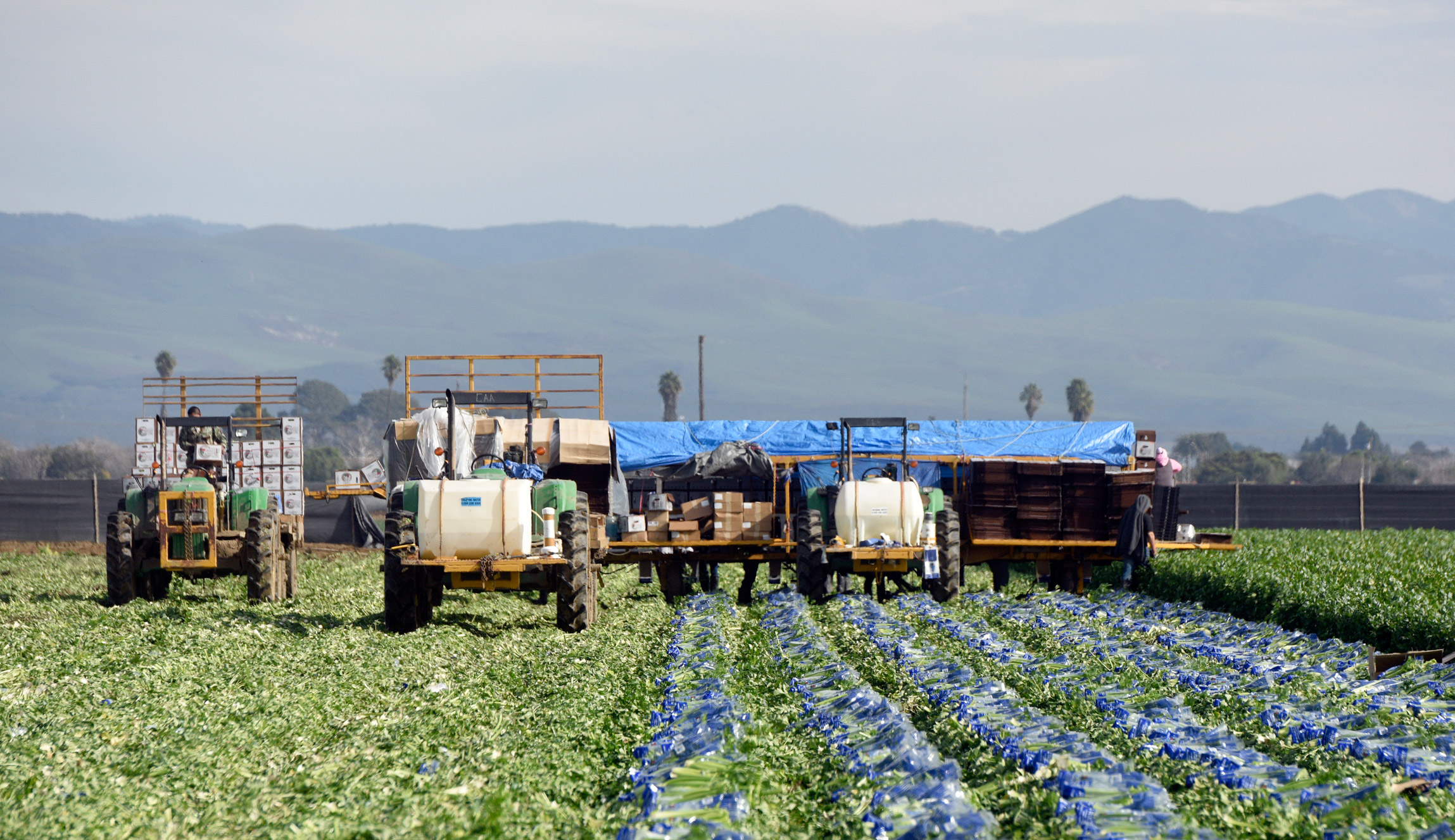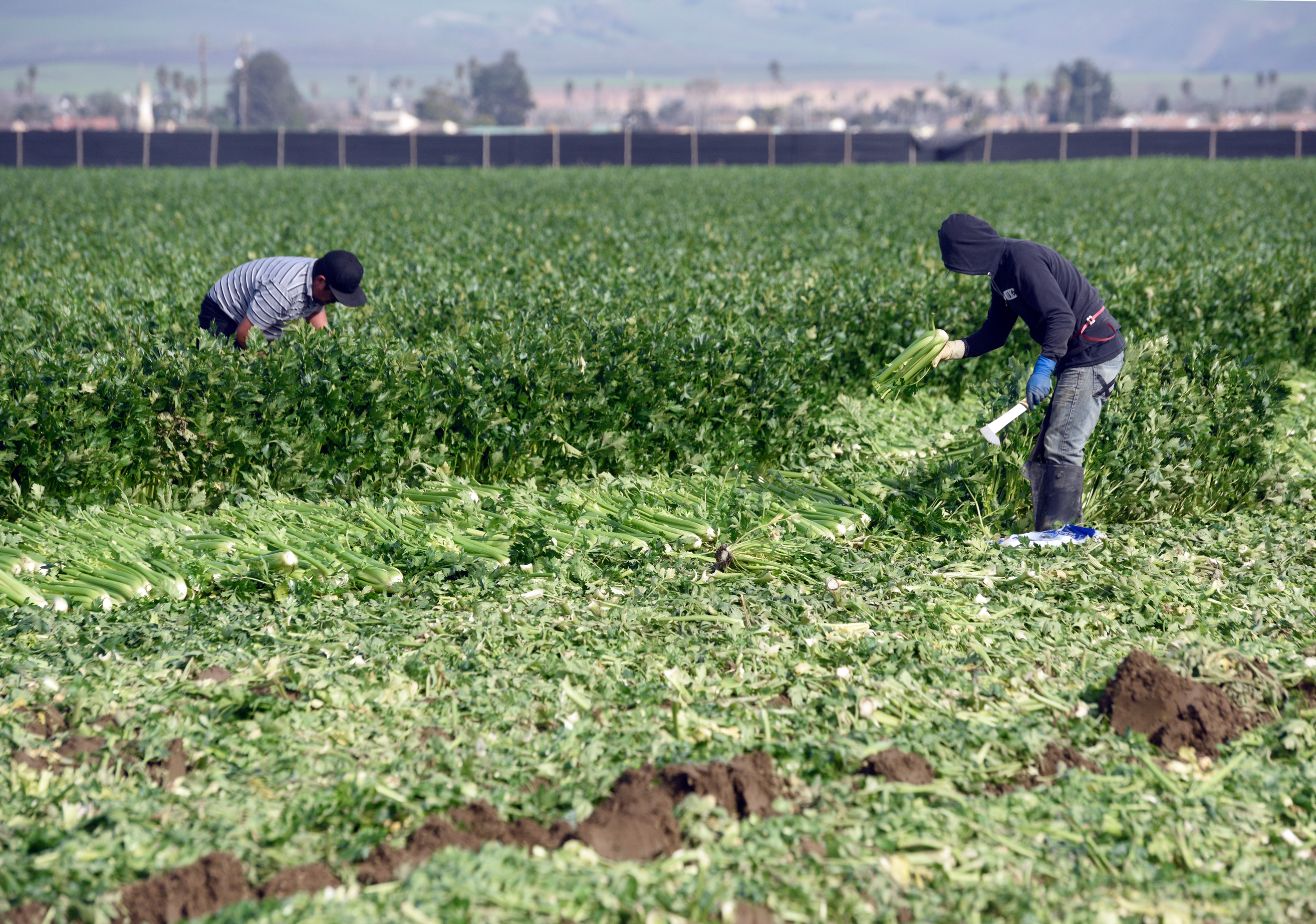Labor Shortage Leaves $13 Million in Crops to Rot in Fields
More Mexican Immigrants are Leaving the U.S. Than Arriving

Last year marked the fifth consecutive year Santa Barbara County’s agriculture industry has struggled with labor shortages, which have ranged from 15 to 26 percent. Farmers, therefore, must leave crops to rot in the fields. An estimated $13 million of strawberries, broccoli, leafy greens, and other unharvested produce were plowed under last year, up from five years ago when losses amounted to an estimated $4.4 million, according to the region’s Grower-Shipper Association.
Central Coast growers do not receive government subsidies for mowing unpicked berries and veggies as Midwestern farmers do for destroying wheat or barley. Some area growers have insurance for losses from heat waves or pests but not for lack of workforce.
Five years ago, when Santa Ynez Valley grower Cindy Douglas put a call out for farmworkers on Spanish radio, she got flooded. Not anymore. Now, farmers might have a crew of five one day, and a crew of 20 the next.
Total, there are anywhere from 15,000 to 23,000 ag workers in Santa Barbara County, most of whom are from Mexico. The number fluctuates as most crops are picked multiple times a year. A field of strawberries can be harvested two to three times per week for roughly six months. The strawberry crop has grown by 20 percent in acreage in five years, and now it is the county’s number one commodity, according to the agriculture report released this week.

Strawberries are just one small piece of the labor shortage. In the last decade, according to the Pew Research Center, more Mexican immigrants have been leaving the United States than have been arriving. As Mexico’s economy improves and becomes less reliant on agriculture, Mexicans are having fewer children and “feeling less the push to migrate north,” said Lucas Zucker of CAUSE (Central Coast Alliance United for a Sustainable Economy).
Security has also tightened along the southern border. The Obama administration deported about three million undocumented immigrants between 2009 and 2016, according to Pew, many more than the two million the Bush administration deported during the eight years prior.
“Part of that was his administration felt that to get Republicans to vote for immigration reform, they needed to show they were tough on immigration,” he said, adding Obama also advocated for deferred action for childhood arrivals (better known as the DACA program) and comprehensive reform.
Under the Trump administration, immigration arrests have surged by nearly 40 percent in three months compared to the same time frame last year, Homeland Security recently reported.

As a broader demographic shift, Mexican immigrants who have worked in the fields for decades are getting older, and their children, born in Mexico or the United States, are not as likely to go work in the fields. Ninety percent of the mothers and fathers who were part of the Bracero Program, which brought millions of Mexican guest workers to the U.S. in the mid-20th century, now have back problems, said Mike Stoker, Santa Barbara Republican and longtime spokesperson for the agriculture industry. Even though they earn on average $2 an hour more than minimum wage, which is $10.50 per hour, immigrants tend to move to other low-wage jobs such as the hotel or restaurant industries within about a decade, Zucker said. “In some ways, the most vulnerable immigrants” — who are from indigenous villages and speak little Spanish or English — “tend to work in the fields,” Zucker said.
Making up some of the labor shortage for about three years in Santa Barbara County is foreign guest workers coming in under the H2A program. In 2015, the most recent available data, 1,300 guest workers came to Santa Barbara County, which has the largest number in all of California. Many growers call for expanding the program, but they also complain it is expensive and cumbersome. The Trump administration appears poised to ramp up some kind of a guest worker program. Wilja Happé, a cut-flower grower in Carpinteria, lamented this is not an option in South County, as there is no available housing, a requirement of the program. To that end, major farmers are pumping money into automation, Stoker said, “as a potential option they wouldn’t have looked at 10 years ago.”



